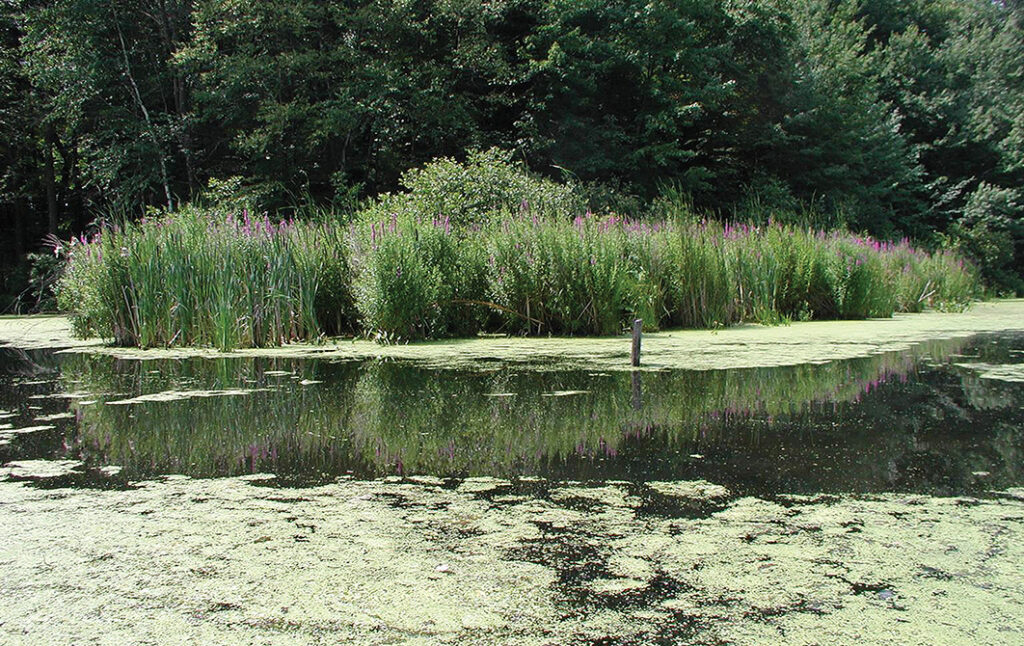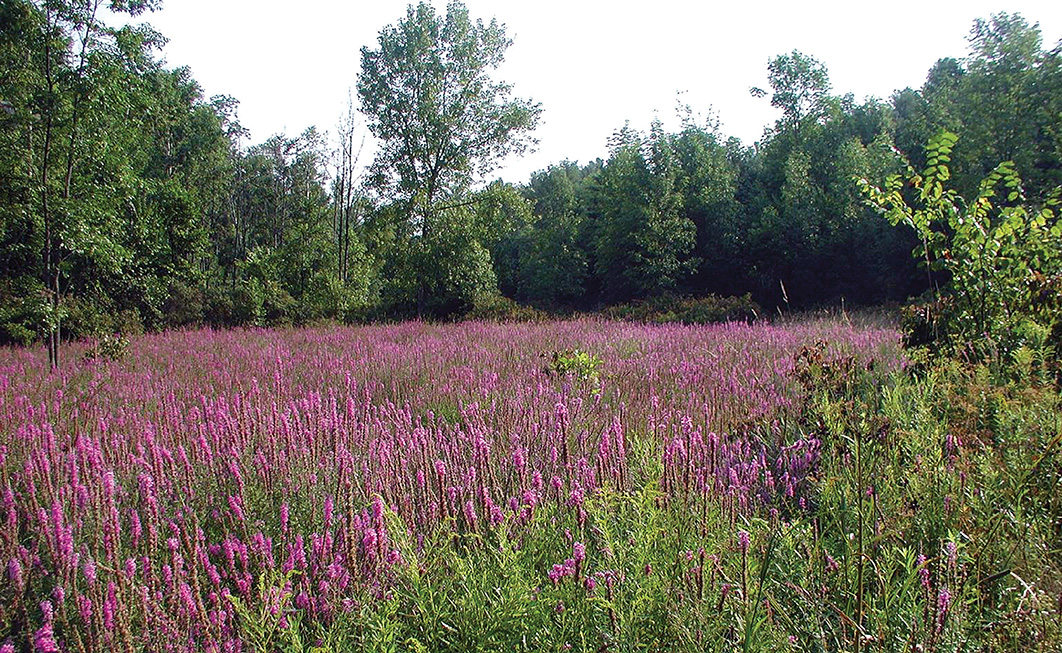By Will Rowlands
Purple loosestrife (Lythrum salicaria) was the first invasive plant I learned about. In the 1970s I saw ever larger incursions along Route 17K in New York, south of the Catskills, on my way to visit my older brother near Ithaca.
When travelling the same route ten years ago and fully aware of its invasive nature, I saw very few patches. The area had been gentrified in the intervening decades and was now home to numerous horse farms. Donna Ellis at UConn told me that beetles were being used for bio-control in New York State but the loosestrife is still out there … I just wasn’t seeing it.
A native of Europe and Asia, purple loosestrife was introduced to North America in the 1800s as an ornamental and for medicinal purposes. It can now be found in natural and disturbed wetlands throughout most of the U.S., but the highest concentrations are found in the glaciated wetlands of the Northeast.
It occupies many different types of wetlands including marshes (both tidal and non-tidal), sedge meadows, bogs, ditches, stream banks and the margins of lakes, ponds and reservoirs.
As with many invasive plants it can tolerate a wide variety of soil conditions and take over an ecosystem. Its dense monocultural stands reduce habitat for waterfowl, clog waterways and interfere with nutrient cycling.
Identification
Purple loosestrife is an erect perennial herb that grows 2-10 feet tall. The square-shaped stems become woody over the course of the season. A single plant can have 30-50 stems.
The lance-shaped leaves are 2-5 inches long and rounded or heart-shaped at the base. The stalkless (sessile) leaves have untoothed margins and can be arranged oppositely in pairs or in whorls of three around the stem.
The leaves and stems may or may not be covered with downy hair.
Purple loosestrife produces showy displays of magenta or pink-purple flowers on terminal 4-16 inch spikes (racemes) in July and August. Individual flowers have 5-7 petals.
The fruit is a capsule with small poppy-sized seeds that mature in August and September.
Reproduction
A single plant can produce millions of seeds. The small, light seeds can be spread by wind, water, wildlife and
humans. Each plant can also expand its range by a foot a year by producing more stems.
Control
Small infestations of young plants can be pulled by hand, ideally before seed set. Large plants can have a woody taproot. For slightly larger plants, use a spade if you can get the whole taproot.
Biocontrol with leaf-eating beetles (Galerucella calmariensis and G. pusilla) and a root-mining weevil (Hylobius transversovittatus) is probably the best approach for large infestations.
Some resort to the application of a glyphosate-based herbicide which we can’t recommend because it’s a non-
specific systemic. If you take this route it is best to apply the herbicide directly to cut stems. Also, if you’re working in or around water, you should use a product with a surfactant specifically formulated for that purpose. According to UConn, a CT DEEP permit is required because glyphosate can have detrimental effects on aquatic creatures.
Broadcast applications of herbicides and cutting or mowing can even increase the size of an infestation the following year so these approaches must be kept up for several years.
Cultivar Caution
Purple loosestrife was a popular plant before its invasive nature became common knowledge. As a result, a number of cultivars were developed and sold. Tags on these plants may say they’re well-behaved, but that changes when they hybridize in the wild.
Native Alternatives
Native alternatives include blazing star (Liatris aspera and L. spicata), blue vervain (Verbena hastata), cardinal flower (Lobelia cardinalis), germander (Teucrium canadense), New York ironweed (Vernonia noveboracensis) and obedient plant (Physostegia virginiana).
Non-Invasive Alternatives
Non-invasive alternatives include scarlet beebalm (Monarda didyma), Joe Pye weed (Eutrochium purpureum, E. dubium), purple cornflower (Echinacea purpurea), swamp milkweed (Asclepias incarnata) and blue giant hyssop (Agastache foeniculum).



